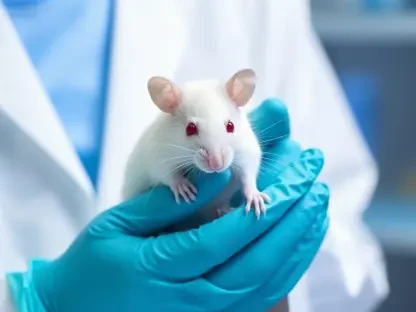For more than three decades, Gulf War Illness (GWI) has cast a long shadow over the lives of countless veterans who served in the 1990-1991 Persian Gulf War, leaving them grappling with a constellation of debilitating symptoms without clear answers or effective treatments. This condition, affecting over 25% of the nearly 700,000 U.S. troops deployed during that conflict, manifests through chronic fatigue, persistent pain, memory and concentration challenges, and a host of other physical and mental health issues. Despite extensive research, the root cause remained elusive, often tied to environmental exposures but lacking a definitive biological explanation. Now, a groundbreaking study from UT Southwestern Medical Center in Dallas, published recently in Scientific Reports, offers a significant breakthrough by identifying dysfunctional mitochondria as the key driver behind GWI. This discovery not only reshapes the understanding of the illness but also ignites hope for targeted therapies that could alleviate the suffering of affected veterans after years of uncertainty.
Decoding a Decades-Long Medical Puzzle
Gulf War Illness has long been a perplexing challenge for medical researchers and veterans alike, characterized by a diverse array of symptoms including exercise intolerance, gastrointestinal distress, skin rashes, and depression. The condition’s complexity made it difficult to pinpoint a singular cause, though strong evidence has consistently pointed to low-level exposure to sarin gas—a neurotoxic chemical weapon released during military operations in the Gulf War—as a primary trigger. The recent study from UT Southwestern Medical Center marks a turning point, revealing that the core issue lies in the dysfunction of mitochondria, the cellular structures responsible for energy production. Led by Dr. Robert Haley, the research team has shifted the narrative from a vague association with chemical exposure to a concrete biological mechanism, providing a foundation for understanding why so many veterans continue to suffer long after their service ended.
This finding builds on decades of investigation into GWI, which initially focused on neurological damage as a potential cause without the technology to confirm specific cellular issues. The identification of mitochondrial dysfunction offers a new lens through which to view the illness, suggesting that the chronic symptoms stem from an energy deficit at the cellular level rather than irreversible harm. Importantly, this perspective contrasts with earlier assumptions that little could be done to reverse the condition. By focusing on the energy-producing components of cells, the study opens up possibilities for interventions that could restore balance and mitigate the wide-ranging effects of GWI. For veterans who have endured years of frustration with limited treatment options, this represents a significant step forward in both validating their experiences and seeking solutions tailored to the underlying problem.
The Cellular Culprit: Mitochondrial Dysfunction
At the heart of the UT Southwestern study is the revelation that dysfunctional mitochondria play a central role in driving the symptoms of Gulf War Illness. Mitochondria, often described as the powerhouses of cells, are critical for generating the energy needed for bodily functions, and their impairment can lead to widespread physiological disruptions. In the context of GWI, the research demonstrates that this dysfunction in brain cells triggers chronic neuroinflammation, a sustained inflammatory response that accounts for symptoms ranging from debilitating fatigue to cognitive difficulties. This connection provides a unifying explanation for the diverse manifestations of the illness, showing how a single cellular issue can ripple out to affect multiple systems in the body.
To uncover this mechanism, the research team employed advanced magnetic resonance spectroscopy, a sophisticated imaging technique that allowed for precise measurement of chemical markers in the brain. By comparing data from 39 veterans diagnosed with GWI to 16 unaffected peers from the same conflict, the study found distinct evidence of energy metabolism problems rather than permanent neuronal damage. This distinction is crucial, as it suggests that the root issue may be addressable through therapies aimed at restoring mitochondrial function or reducing inflammation. Unlike conditions tied to irreversible loss, the potential reversibility of mitochondrial issues offers a glimmer of hope for veterans, pointing toward a future where their symptoms might be significantly alleviated with targeted medical interventions.
Environmental Triggers and Their Lasting Impact
A critical aspect of the UT Southwestern research is its reinforcement of the link between Gulf War Illness and exposure to sarin gas during the 1990-1991 conflict. During military operations, the bombing of Iraqi chemical weapons facilities inadvertently released low levels of this potent neurotoxin into the environment, affecting countless troops. While this association has been widely accepted based on prior studies, the current findings delve deeper into how sarin disrupts cellular processes, specifically targeting mitochondrial function at a molecular level. This disruption sets off a chain reaction of energy imbalance and inflammation, which manifests as the chronic symptoms that define GWI.
This connection underscores the long-term consequences of environmental toxins in military settings, highlighting the need for greater awareness and protection against such exposures in future conflicts. The study’s detailed examination of sarin’s impact on cellular energy production provides a clearer picture of how brief encounters with harmful substances can lead to decades of health challenges. Beyond explaining the origins of GWI, these insights contribute to a broader understanding of how neurotoxic agents affect human physiology, potentially informing strategies to mitigate similar risks for current and future service members. The research thus serves as both a historical reckoning and a forward-looking call to prioritize veteran health in the face of chemical hazards.
Cutting-Edge Science Paves the Way
The breakthrough in understanding Gulf War Illness owes much to the innovative methodologies employed by the UT Southwestern team, particularly the use of state-of-the-art magnetic resonance spectroscopy (MRS). This technology enabled precise analysis of the basal ganglia, a brain region integral to movement, learning, and emotional regulation, by measuring specific chemical ratios tied to neuronal health and energy metabolism. The study’s focus on these markers revealed elevated creatine levels in GWI veterans, pointing directly to mitochondrial dysfunction rather than irreversible damage—a finding that sets this research apart from earlier, less conclusive efforts.
The precision of MRS allowed the researchers to distinguish between competing theories about the nature of GWI, offering a level of clarity that was previously unattainable. By comparing affected and unaffected veterans from the same era, the study ensured a robust dataset that strengthens the credibility of its conclusions. This methodological rigor not only confirms the biological underpinnings of the illness but also establishes a blueprint for future research into complex, multi-symptom conditions. The success of this approach highlights the importance of leveraging advanced diagnostic tools to unravel medical mysteries, potentially accelerating progress in other areas of veteran health and beyond.
A Path Forward for Veterans’ Health
The identification of mitochondrial dysfunction as the root of Gulf War Illness carries profound implications for treatment, transforming a condition once thought intractable into one with potential solutions. Unlike disorders caused by permanent damage, an energy imbalance at the cellular level suggests that therapies could be developed to enhance mitochondrial function or reduce chronic neuroinflammation. Such interventions might significantly improve the quality of life for veterans who have lived with GWI for over 30 years, offering relief from the physical and mental toll of their symptoms. The UT Southwestern team is already exploring how sarin induces these cellular changes, laying the groundwork for novel treatments.
Beyond its immediate impact on GWI, this research holds promise for related conditions like chronic fatigue syndrome and fibromyalgia, where mitochondrial issues and inflammation may also play a role. The broader applications of these findings could amplify their significance, contributing to medical advancements across multiple fields. As efforts continue to develop targeted therapies, the hope is that veterans will soon access treatments that address the core of their illness, marking a long-overdue recognition of their sacrifices. This study thus stands as a beacon of progress, pointing toward a future where science and compassion converge to heal those who have served.









